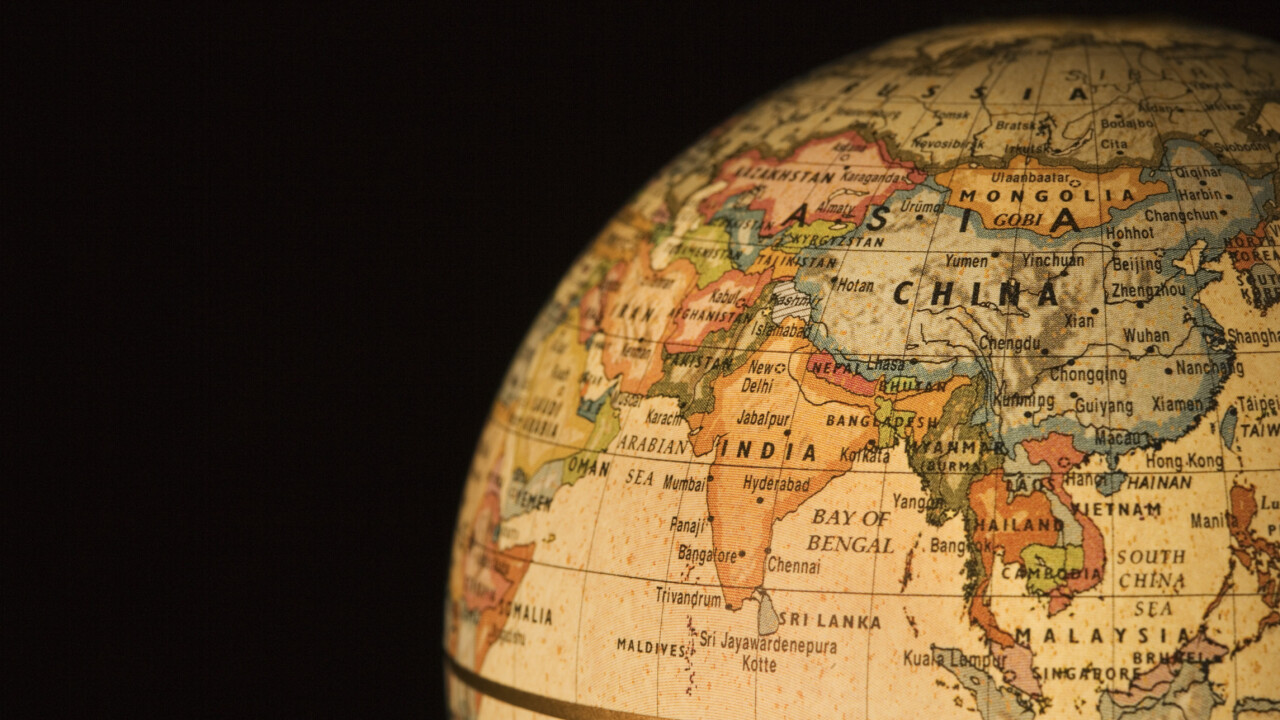
Path unveiled a significant update to its private messaging app today, introducing private messaging and a shop — to open a new revenue stream — which will sell new ‘handcrafted’ stickers and its already existing premium filters for photos. Founder Dave Morin explained the thinking behind Path 3.0 to TNW but, the more I use the app, the more it reminds me of popular messaging services in Asia.
It’s almost a year since we wrote about the growth of Path clones in Asia, and China specifically. Latching on to Path’s impressive growth — Morin revealed Asia was its fastest developing region in early 2012 — apps that bordered on being shameless copy cats emerged in the early part of 2012.
Fast-forward to today, however, and the influence is running the other way round. We recently predicted that Facebook’s Messenger service would take its cues from Asia, but let’s look at how Path has been inspired.
Instant messaging
The year 2012 was a huge one for messaging apps in Asia, which grew into genuine challengers to Facebook. Japanese app Line — which has 100 million plus users — is spreading across the region, rivaled by Kakao Talk (85 million) and China’s WeChat, which has a whopping 300 million downloads.
Rather than Path-like apps taking off, messaging clients like these grew tremendously in 2012, to the point that they now rival Facebook on user numbers in many markets. For example, Line has 30 million downloads on its home turf in Japan (where Facebook has 13 million registered users), and it has more than 10 million in Taiwan (where Facebook has 13 million) and over 10 million in Thailand (where Facebook has 18 million). That’s impressive for an 18-month-old service.
These apps are progressing because users are turning to them for a better experience communicating with their friends on mobile than they enjoy on Facebook — although Facebook Messenger is stepping up to the challenge with more features.
It seems likely that the emergence of this trend worldwide, combined with reports that Facebook is losing some of its appeal in North America, has inspired Path 3.0’s messaging feature.
For comparison, here — from left to right — is a sample of the messaging experience on Path, Line, WeChat and Kakao Talk, respectively. The similarities are uncanny.
Push to talk
A comparatively less noticeable but nonetheless interesting introduction has also been added in the form of push-to-talk: ‘PTT’, a walkie-talkie like functionality for voice messaging.
PTT has traditionally been popular across Asia since it offers a low-bandwidth way to communicate without the fiddly task of typing complicated Asian scripts into a phone. The addition is likely a move to improve Path’s appeal for users in Asia, but, the growth of free call and mobile video features — which most of the top chat apps offer — has seen the appetite for PTT decline.
It will be interesting to see how this is received, both in the US and overseas. I have a feeling that it will not be much used, as the other new features steal the limelight.
Nonetheless, the fact it has been added shows that Path 3.0 is as much about appealing overseas, as it is bringing international business models to the US.
Stickers
Perhaps the most significant introduction sees Path add stickers — emoticon-like images which can be pasted into conversations and are sold for around $1/$2 per set. Here’s the crux of what Morin told us today about stickers in Path:
Morin tells us that the stickers are not just for decoration or to flood your friend’s timeline with artwork from nine of the Internet’s popular artists. Rather, it was implemented because Path believes stickers can communicate better than text. It allows users to express themselves through a more emotional way. And no, these are not going to replace the always popular emoticons in the app.
More than just the user experience, stickers are a key revenue generator in Asia. Indeed, Line was bringing in $3.75 million per month through sticker sales back in July. Now it has doubled its user base and, while it isn’t revealing figures, it told TechCrunch in January that its sticker-based income is “a lot higher now”.
Born in Asia, emoji has already conquered the mobile world — as this excellent feature from The Verge explains — and Path will hope that the next step to that is users in the west paying a buck for a set of stickers that better convey their emotions. Clearly this introduction is a big deal for Path which, to date, has only drawn revenue from the sale of premium photo filters, which are also sold in the new ‘shop’.
Right now, however, the stickers for other services are some what more advanced than Path’s — some are even sponsored by companies such as Disney — and that could become an option for the US service in the future. To encourage initial adoption and awareness, Path has started by offering a number of sets for free, as was common practice when stickers first launched in Asia.
Here’s a look at how a number of sticker shops and experiences compare.
Line:
Cubie (a drawing-themed app — backed by 500 Startups — that is one of our pick of hot startups from Greater China):
Path:
The Asian influence
Talking to Kik founder Ted Livingston late last year, it was clear that companies in the US were taking note of the growth of Asian messaging apps. However Livingston, unlike Morin, believed that the business model doesn’t cross-over into the US directly, since user habits differ.
“The ‘put as many features in the app as possible’ approach [from Asia] isn’t going to work in the West,” he said in an interview in November. “Western users want a clean and simple experience, while we think that they like features but the core experience must be simple.”
Things have moved on, even since then, with Line launching its product in the US — rapper Snoop Dogg is among its brand ambassadors — and WeChat-maker Tencent is laying the ground work to launch a North American presence too. The Asian apps are coming, so it figures that their standout features will make the transition to US services too.
Although their respective user bases far outnumber Path’s 6 million downloads, the latter likely enjoys a larger presence in the US. That could turn Path into a strong competitor to both messaging apps and, with Facebook Messenger continuing to evolve, it could be that stickers and other Asia-like features are adopted by other western messaging apps off the back of Path’s actions.
Certainly the launch of Path 3.0 is significant in so much that it is the first clear sign that a US messaging firm has borrowed business models and features from peers in Asia. So much for the Asian copycats.
Headline image via Thinkstock, Facebook user figures via Socialbakers
Get the TNW newsletter
Get the most important tech news in your inbox each week.









